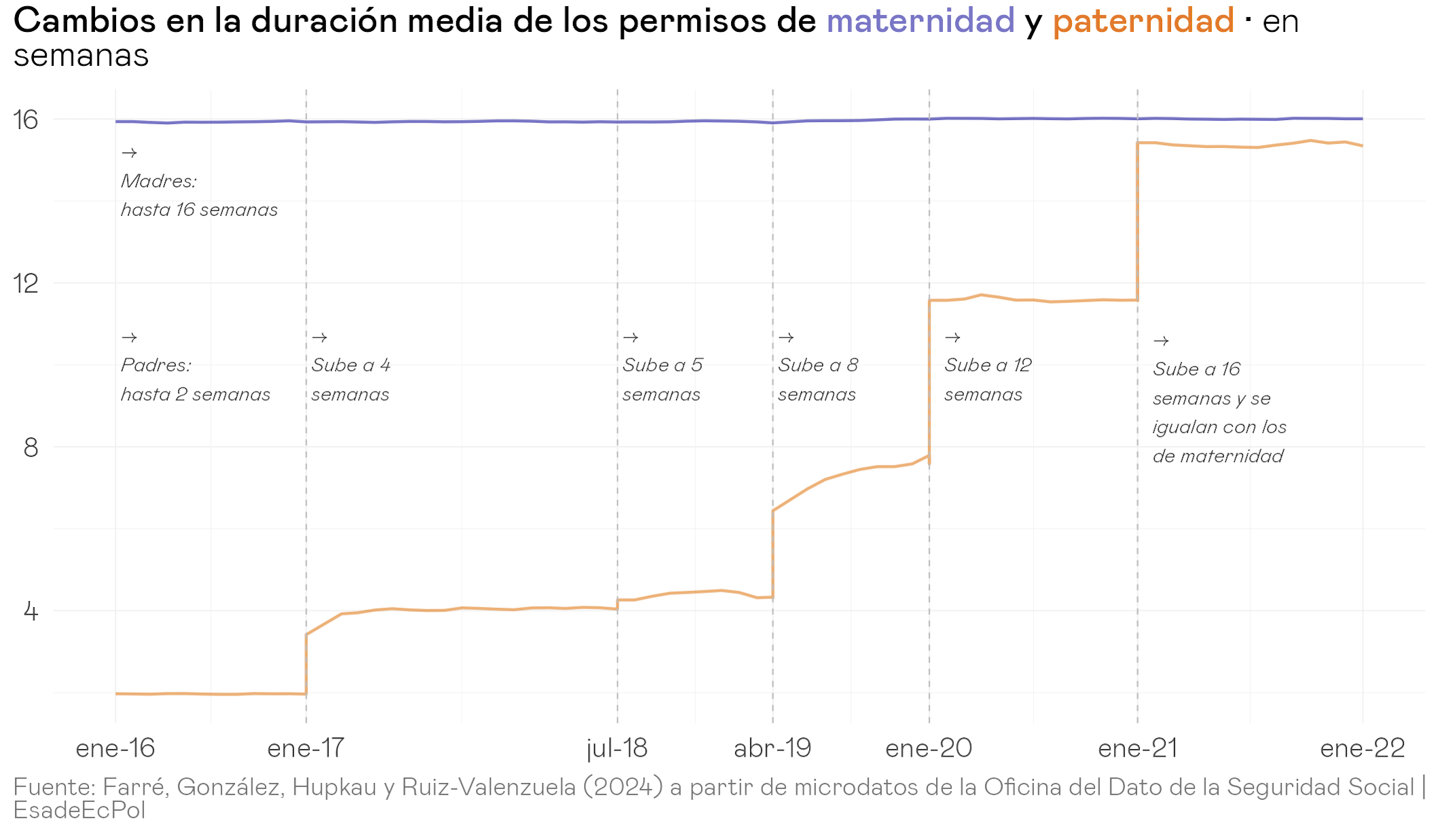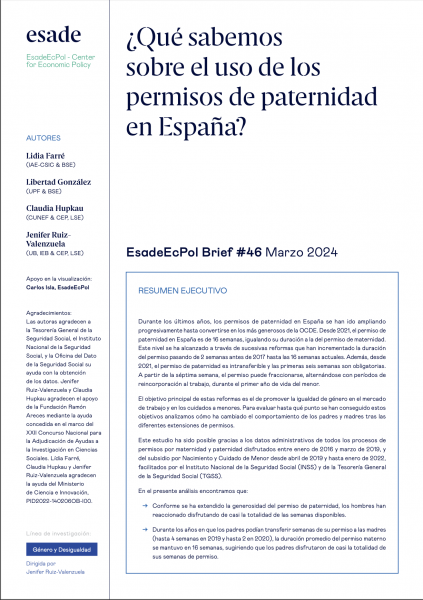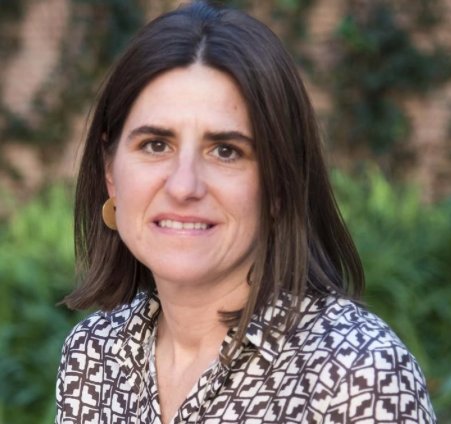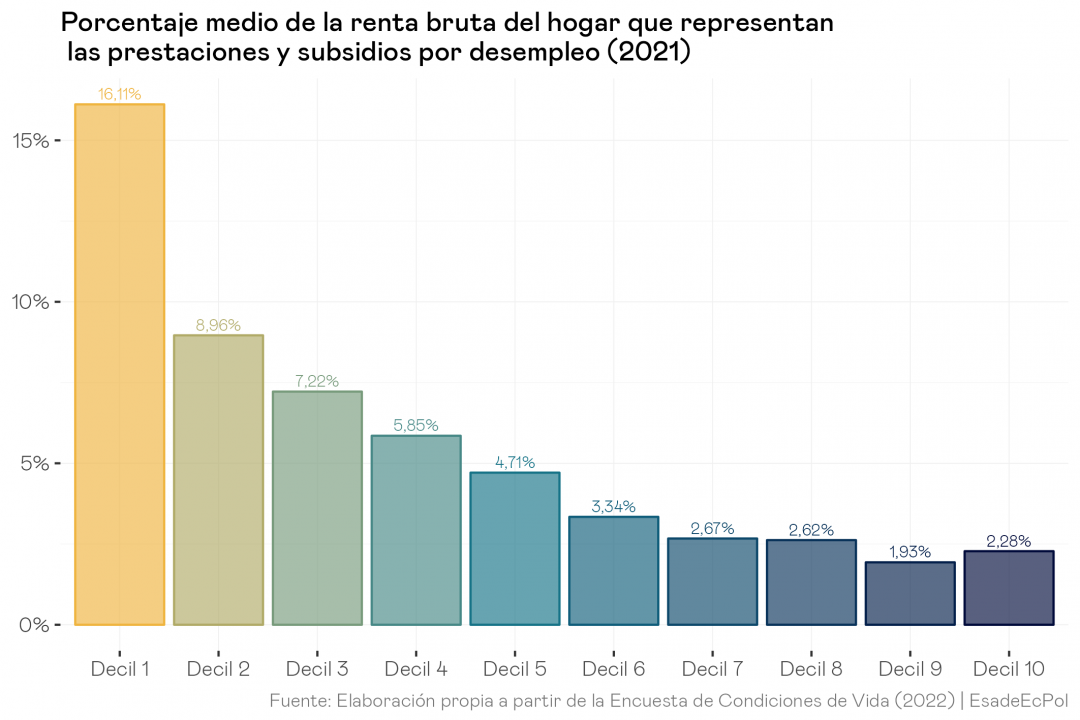
What do we know about the use of paternity leave in Spain?
Lídia Farré, Libertad González, Claudia Hupkau, Jenifer Ruiz-Valenzuela
12 Mar, 2024
In recent years, paternity leave permits in Spain haves been progressively extended until to becominge the most generous ones in the OECD. Since 2021, paternity leave in Spain is 16 weeks, matching the length of maternity leave. This level has been achieved through successive reforms that have increased the length of leave from 2 weeks before 2017 to the current 16 weeks. In addition, since 2021, paternity leave has beenis non-transferable and the first six weeks are mandatory. From the seventh week, the leave can be split, alternating with periods of return to work, during the first year of the child’s life.
The main objective of these reforms is to promote gender equality in the labor market and in childcare. To assess the extent to which these objectives have been achieved, we analyze how the behavior of fathers and mothers has changed after the different leave extensions.
This study was made possible thanks to the administrative data of all maternity and paternity leave processes enjoyed between January 2016 and March 2019, and of the Birth and Child CareChildcare allowance/subsidy from April 2019 and until January 2022, provided by the National Institute of Social Security (INSS) and the General Treasury of Social Security (TGSS).
In the present analysis, we found that:
- As the generosity of paternity leave has increased spread, men have reacted by taking almost all of the available weeks.
- During the years when fathers could transfer weeks of their leave to mothers (up to 4 weeks in 2019 and up to 2 in 2020), the average length of maternal leave remained at 16 weeks, suggesting that fathers enjoyed almost all of all their leave weeks.
- The introduction of the option to split the permit into several periods is causing important changes in behavior:
- Prior to the introduction of the possibility of splitting the leave, fathers took 100% of their leave at the same time as the mothersmother. Today, only 50% of fathers take all of their leave at the same time as the mother.
- Currently, on average, 12 of the 16 weeks of leave – 75% – enjoyed by fathers of children born since January 2021 are being taken simultaneously with the mother.
- In April 2019, just over 20% of fathers split their leave. Among men who became fathers since January 2021, more than 50% do so, and they usually opt for an initial period of about seven weeks together with the mother, and successive periods that they usually enjoy once the maternity leave is over. This results in an increase in the total time that children can be under in the care of one of their parents.
- There are significant variations in the percentage of fathers who decide to split the leave depending on their autonomous community of residence or economic sector of work:
-
- By autonomous communities: in the Canary Islands, Andalusia, and Extremadura only 35-45% of fathers split the leave, compared to 70% in Navarre, La Rioja, and the Basque Country.
-
- By economic sector: the hotel and catering, and agriculture sectors have the lowest rates of leave splitting leave permits, while in the information and communication sector, as well as in the financial and professional activities sector, more than 70% of fathers choose to split their leave. This suggests that splitting leave is a more common practice in more competitive sectors and with more highly educated workers.
- These patterns suggest that the distribution of leave time is influenced by factors such as the educational level or income of the parents, or employment characteristics, such as the acceptability or ease of splitting the leave.
- The differences in the average duration of paternity leave between sectors or Autonomous Regions are generally less than one week. Sectors with a higher percentage of occupations with a low level of education (e.g., agriculture, industry, construction, transportation, or commerce) have a somewhat shorter average duration than those sectors with a higher percentage of occupations with a higher level of education (such as education or health).
- Currently, only 4.5% of fathers choose to take the non-mandatory weeks of paternity leave part-time, i.e. combined with employment.
- We believe that the fact that in Spain fathers are enjoying on average almost all the weeks available (something that is not necessarily the norm in our neighboring countries) is due to the combination of three factors: the fact that they are not transferable to the other parent; the generosity of their remuneration (100% of salary); and the obligatory nature of the first six weeks after the birth of the child.
- Still, 75% (on average, 12 out of 16 weeks) of paternity leave is taken while the mother is also at home. Although there is evidence that the father’s presence at home in the first months after childbirth can have positive effects on the mother’s health, this trend may also limit the positive effect of the policy in increasing fathers’ involvement in childcare.
We conclude that more research is needed to assess the impact of these reforms on the promotion of gender equality. Existing evidence points to mixed results regarding the impact ofon the gender gap in the labor market, and several studies find an increase in fathers’ involvement in childcare. It is also important to note that, as other studies suggest, some effects associated with these effects may manifest themselves in the longer term or among future generations.


Associate professor of Economics at Universitat Pompeu Fabra & Barcelona School of Economics
View profile
Assistant professor en CUNEF & associate en el Education and Skills Programme del Centre for Economic Performance (LSE)
View profile
Miembro del consejo asesor del Centro de Políticas Económicas - EsadeEcPol
View profile


